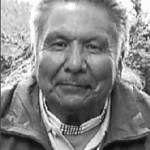 Chantel Rose Craig, “Little Eagle” Mar. 21, 2011-Oct. 8, 2012
Chantel Rose Craig, “Little Eagle” Mar. 21, 2011-Oct. 8, 2012
Chantel was entered into rest with Grandma, Barbara Craig; Grandpa, Alex Henry, Daryl Pacheco, John Flores; Auntie, Hazel Craig, Holly Jones; and Uncle, Wayne Hatch.
Chantel Rose was a happy, loving baby, always smiling, laughing and talking. Her favorite word was “dad”. Her little smile warmed everyone’s heart. In her young life she touched many people’s lives. She was such a strong little girl who loved her mom, dad, big sisters and brothers. She was loved by numerous aunts, uncles, and cousins.
She is survived by her Dad, Cameron Craig; Mom, Christina Cladoosby-Carlson; Siblings, Rashenia Cladoosby, Marcus Cladoosby, Dezerae Craig, Amado Carlson, Lazalea Descheuquette-Craig, Malia Carlson, Juanita Craig; Grandfather, Rocky Baker; Grandma, Myrna Pacheco; numerous aunts, uncles, and cousins.
She will always be daddy’s little girl.
Interfaith Service will be held Friday, October 12, 2012 at 6 p.m. at the Tulalip Tribal Gym. Funeral Service will be held Saturday at 10 a.m. at the Tulalip Tribal Gym with burial following at Mission Beach Cemetery.
Arrangements entrusted to Schaefer-Shipman Funeral Home.









